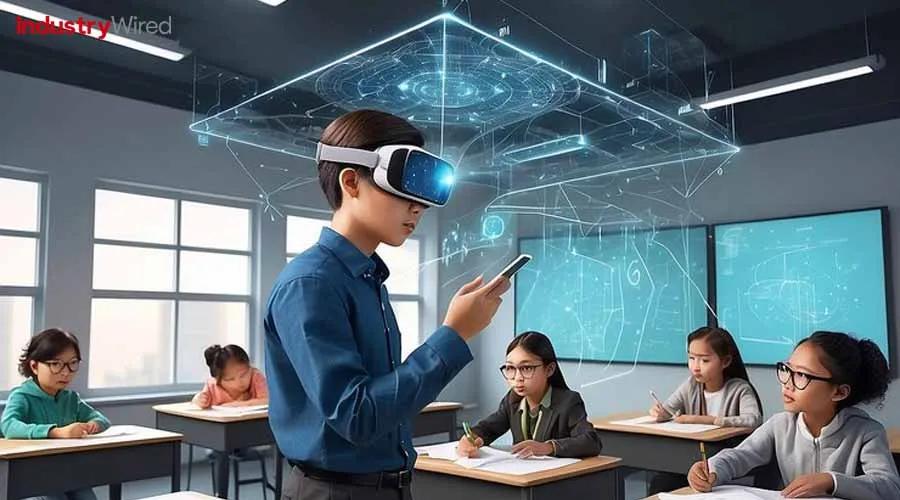Mastering VR/AR in the Classroom: Essential Strategies for Training Teachers to Use Immersive Tools Effectively
Discover actionable strategies,practical tips,and real-world insights for empowering educators to confidently integrate VR/AR technologies in modern classrooms.
Introduction: Embracing the Future of Education
Virtual Reality (VR) and augmented Reality (AR) are revolutionizing the modern classroom. Thes innovative immersive technologies capture student attention, boost engagement, and unlock new learning experiences. But to truly harness the potential of VR/AR in education, schools need confident, well-trained teachers. This complete guide explores essential strategies for training teachers to use immersive tools effectively, transforming classrooms into dynamic environments were learning comes alive.
Why Teacher Training for VR/AR is Crucial
- Bridges the digital skills gap: Many educators are unfamiliar with immersive tech. Effective training programs ensure all teachers, regardless of background, can confidently use VR/AR tools.
- Promotes curriculum integration: Teaching practical lesson integration ensures VR/AR is used purposefully, enhancing learning rather than being a mere novelty.
- Encourages equitable access: Well-trained teachers adapt VR/AR experiences for diverse student needs,supporting inclusive classrooms.
- Future-proofs education: As technology evolves rapidly, teachers who can adapt ensure students gain the skills needed for tomorrow’s workplace.
Benefits of Incorporating VR/AR in the Classroom
successfully implemented, VR/AR in education offers a host of advantages:
- Enhanced engagement: Interactive, 3D environments make abstract concepts tangible.
- Improved retention: Multisensory experiences help students remember material longer.
- Safe exploration: Virtual labs, field trips, and historical events offer hands-on learning without risks or costs.
- Personalized feedback: Many immersive tools provide real-time tracking of student progress and adaptive support.
- Increased accessibility: AR/VR can be tailored to different learning styles and needs, offering new opportunities for students with disabilities.
Essential Strategies for Training Teachers in VR/AR
1. Begin with the Basics: Demystifying VR/AR Technology
- host introductory sessions that explain terminology, major devices (like Oculus Quest, HTC Vive, Merge cube), and relevant differences between VR/AR.
- Allow hands-on exploration of headsets, mobile AR apps, and content libraries to reduce hesitation and spark curiosity.
2. Integrate Pedagogical Principles
- Connect immersive tools to proven teaching methods (e.g., inquiry-based learning, project-based learning).
- Highlight lesson examples that align with curriculum standards, ensuring relevance and value.
3. Foster Collaborative Learning
- Encourage teachers to co-design and test VR/AR lessons in pairs or small groups, building confidence through peer support.
- Set up a mentor system or “VR/AR Champions” group for ongoing sharing of tips and troubleshooting.
4. Deliver Ongoing Professional Development
- Offer regular workshops and webinars on new applications, content updates, and best practices.
- Create online communities of practice, such as dedicated Slack channels or private Facebook groups for VR/AR educators.
5. Provide just-in-Time Technical Support
- Ensure IT staff or designated “VR specialists” are available to help with device setup, troubleshooting, and updates.
- Develop or share easy-to-follow how-to guides, FAQs, and video tutorials tailored for educators.
6. Emphasize Safety,Accessibility,and Ethics
- Train teachers on student safety,device hygiene,and screen time limits.
- Address privacy concerns and appropriate digital citizenship.
- Introduce strategies for adapting immersive tools for students with differing needs (e.g. subtitles, adjustable settings for sensory sensitivities).
Practical Tips for Integrating VR/AR into Everyday Teaching
- Start small: Begin with brief, well-defined VR/AR activities aligned to a lesson objective.
- Make it interactive: choose applications that allow for student agency,such as VR field trips where students can “collect” virtual items or AR scavenger hunts.
- Reflect and discuss: Build in time for class discussions post-experiance, helping students connect immersive activities with core content.
- Document and share success: Encourage teachers to log their experiences and share successful strategies or lessons with colleagues.
- Solicit student feedback: Use quizzes, reflection journals, or surveys to gauge student reactions and identify areas for enhancement.
Case Studies: Real-World VR/AR Integration in Schools
Case Study 1: Middle School Science—Virtual Dissections
At a middle school in Texas, science teachers introduced a VR frog dissection simulation as an choice to traditional methods. After a brief training session on using the VR headset and software, teachers conducted guided lessons. Results: Students showed increased engagement, reported less anxiety, and demonstrated improved understanding of anatomy.
Case Study 2: High School Social Studies—AR Timelines
A high school in California implemented AR timelines for history projects. Teachers attended a collaborative workshop where they learned to use an AR app and design their own interactive timelines.results: Both students and teachers cited greater retention of historical events and a higher level of classroom participation.
Case Study 3: Primary School Geography—virtual Field Trips
Using affordable cardboard VR viewers, a primary class in the UK explored the Amazon rainforest virtually. Teachers accessed professional development materials online and tested the experiences beforehand. Results: Students were able to vividly describe biomes and demonstrated increased curiosity about the natural world.
Firsthand Experience: A Teacher’s Perspective
“As someone with limited tech experience,I found VR intimidating at first. After attending a hands-on workshop with supportive peers, I realized how user-friendly it can be. Now, VR is a highlight in my lessons—students eagerly anticipate each new experience, and I feel equipped to troubleshoot most issues.”
– Monica H., 8th Grade Social Studies Teacher
Conclusion: Building Confidence to Transform Learning
Training teachers to use VR/AR in the classroom doesn’t have to be daunting. By focusing on foundational skills, fostering supportive communities, and tying immersive tools directly to proven educational strategies, schools can empower educators to create truly transformative learning experiences. the key is sustainable, ongoing support—so educators can master the technology, adapt, and ignite student curiosity for years to come.
Ready to bring immersive education to your school? Start with these essential strategies for teacher training, and you’ll soon see the benefits ripple across classrooms. When teachers are confident, students thrive!

